The three days of Chuseok this year and adjoining weekend mean most working people in Korea will have at least a four- or five-day break for the holiday. Some lucky souls may even say why bother and take the whole week off.
But if you haven’t planned it yet, you may be hard-pressed to go anywhere with your time.
Chuseok is especially reputed as the time of year the mega-metropolitan capital Seoul empties, as people drain from the city to their historic hometowns and reunite with family -- and when major highway arteries across the nation clog and slow to catastrophic crawls.
Not ones to despair, The Korea Herald has spoken with those in the know to find out where to venture for a refreshing day trip.
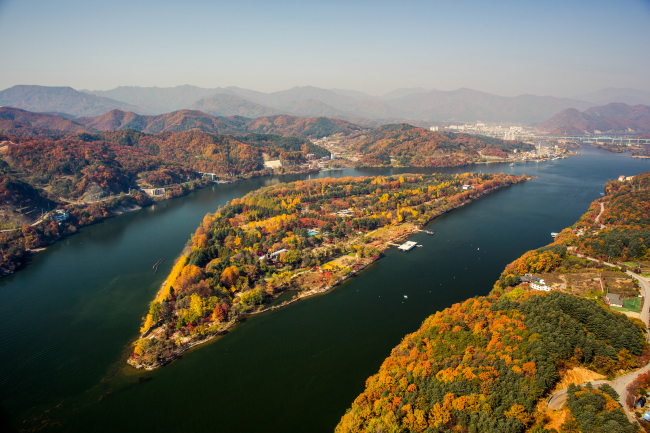 |
Nami Island, Gangwon Province (KTO) |
Northeast bound
To play it safe over Chuseok, stick to destinations accessible from Seoul’s far-reaching subway system, such as via the Gyeongchun Line to the northeast.
Famous for its tree-lined roads perfect for romantic strolls and selfies, and especially popular since featuring in TV drama “Winter Sonata,” Nami Island is the ultimate spot for a daylong date. According to Park Tae-jung of Korea Time Tour, the island is also “a cultural center for creative ideas of local artists” that “plays host to a variety of cultural events, concerts and exhibitions throughout the year.”
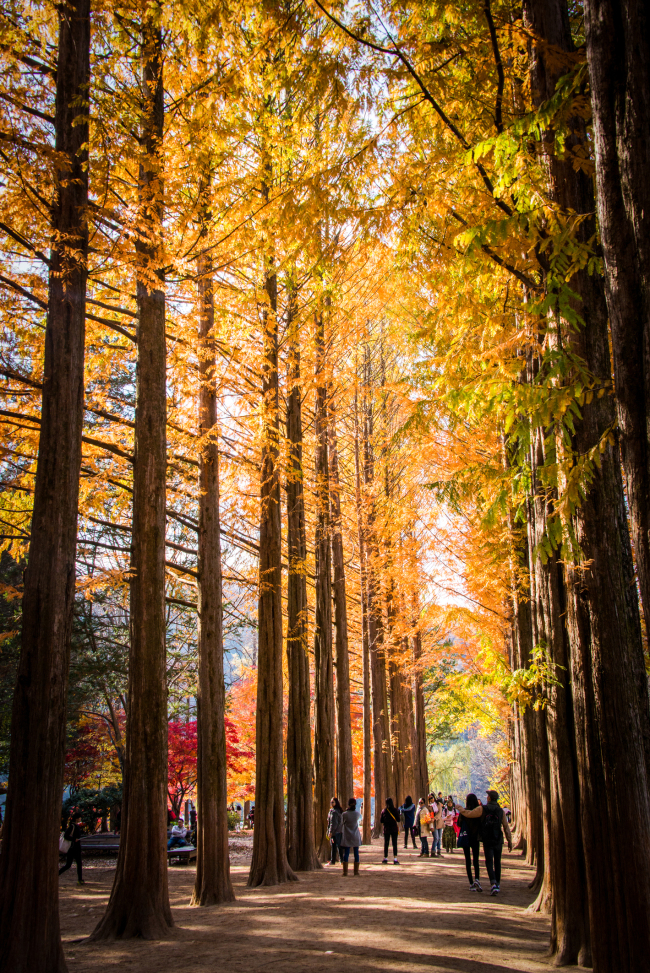 |
Nami Island, Gangwon Province (KTO) |
From Gapyeong Station, it’s a saunter of about 2.5 kilometers or quick taxi ride to catch the ferry for the river island.
For the more motivated, Park adds, “There are several other tourist attractions to enjoy close to Nami Island such as Petite France, rail bikes or the Garden of Morning Calm.”
Or continue farther along to the end of the line to Chuncheon, Gangwon Province. The city is especially famous for the spicy chicken and rice cake mix at the original locations for the cuisine on Chuncheon Dakgalbi Street in its own Myeong-dong. Northeast of the city are Soyang Lake and nearby temple Cheongpyeongsa, which dates to the Goryeo Kingdom.
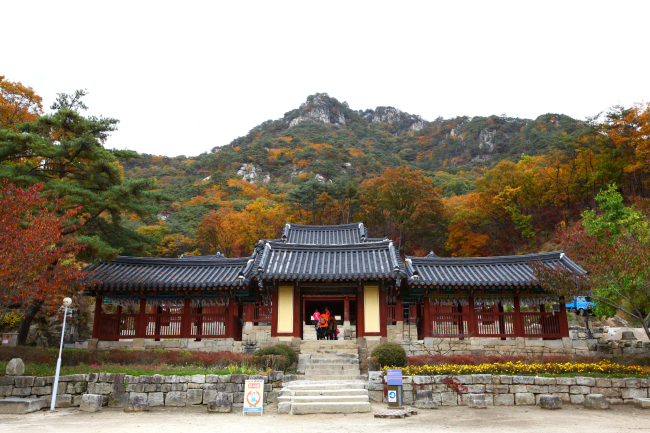 |
Cheongpyeongsa, northeast of Chuncheon, Gangwon Province (KTO) |
For those who really want to save on subway fare and get a workout, bicycle paths extend from Seoul to Chuncheon, following alongside the Han River before breaking north. The nearest points of the two cities are about 100 kilometers apart by the bike road, and it is great riding for any enthusiast.
Areas around Paldang Dam are especially enjoyable, as the path is built over disused train tracks that go through tunnels and over a high, long rail bridge. For a truncated version, focus on the sections from Paldang Station, where bicycles can be rented, to Yangsu or Sinwon Station.
Gangneung
A subhost to this year’s PyeongChang Winter Games, connections to this east coast city have recently been greatly improved, with increased train services.
But it’s too late for that. Train tickets have long been sold out.
A new, much faster, highway was also opened, and many buses still remain from East Seoul Bus Station. The fare starts at 13,100 won ($11.70) each way, and advertised -- meaning best-case scenario -- travel time is two hours, 20 minutes.
 |
Gyeongpo Beach in Gangneung, Gangwon Province (KTO) |
Go for a last chance at the sea for the season. Korea Tourism Organization representative Kim Kwon-soo notes that “Gyeongpo Beach is the most popular beach in Korea,” famed for one of Korea’s longest beaches and Gyeongpo Lake to the back of it, giving visitors the opportunity to experience the beach and lake simultaneously.
He adds that visitors especially come for the food: fresh crab, cockle bibimbap and soft tofu. The stretch of beach has also recently become known for its coffee.
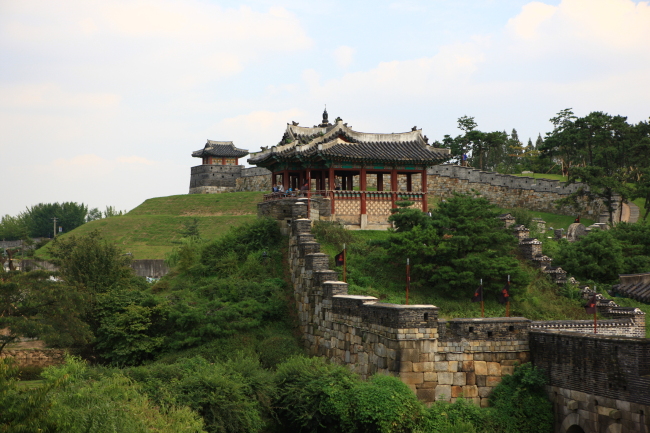 |
Hwaseong Fortress in Suwon, Gyeonggi Province (KTO) |
Suwon
According to Kim, the day trip from the capital tourists ask about most is Suwon. And Seoul’s somewhat smaller brethren to the south has its own charms to discover.
Hwaseong Fortress was designated a UNESCO World Culture Heritage Site in 1997 and completed over 200 years prior. It encircles what is now the middle of the city, and its picturesque length of over 5 kilometers is open for visitors to traverse.
The city walls of the fortress include the traditional four gates for each of the cardinal directions as well as seven arches to accommodate the stream that runs through it. There are various touristic sites and experiences to be had along the way, and a palace in the center.
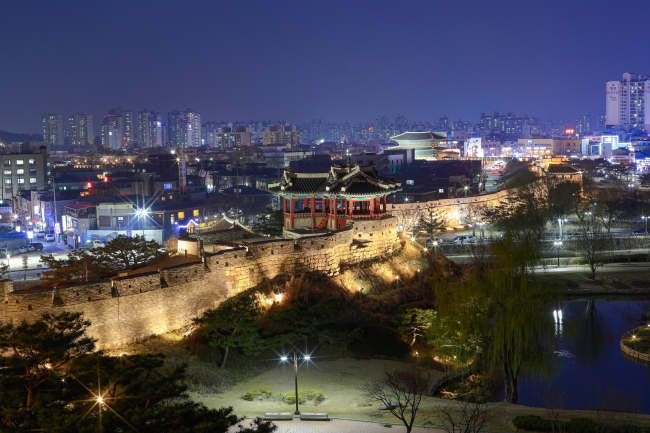 |
Hwaseong Fortress in Suwon, Gyeonggi Province (KTO) |
For meat-eaters who work up a hunger, Suwon is renowned for its galbi, or marinated beef ribs. Though many restaurants are likely to be closed on the main Chuseok holiday of Sept. 24, it’s worthwhile for culinary tourists to seek out.
 |
Bukhansan National Park in Seoul (KTO) |
Seoul
The initial idea was to get outside of the city, but there’s some satisfaction in just getting out of the house.
KTO’s Kim recommends Bukhansan National Park -- the only national park within Seoul -- as the spot for a city break in the city.
The enormous park above the city straddles the border of northern Seoul and Gyeonggi Province, and offers a multitude of options for hiking, climbing, temples and biking, with various spectacular views of nature or overlooking the city.
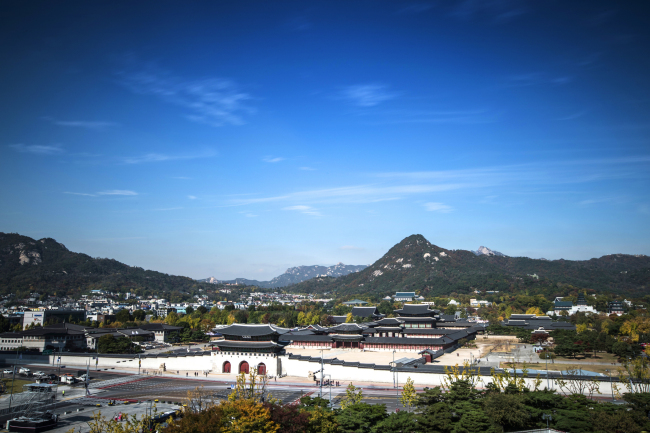 |
Gyeongbokgung, main palace in Seoul (KTO) |
For a tourist-in-your-own-city feeling, there’s no beating the royal palaces, particularly main palace Gyeongbokgung just north of Gwanghwamun Plaza and Changdeokgung nearby Anguk Station. As a kicker, entry is free for the holidays from Saturday to Wednesday.
Proceed with caution
The Chuseok traveling wisdom has long been to avoid roads between Seoul and Busan, which is most of the peninsula, and opt to go north or east from Seoul. With changing demographics and trends, it’s uncertain how true that still is -- though you would not want to chance it on the long parking lot of a highway to the southeastern port city.
More locals these days are staying home for the holidays, or likewise taking family excursions. One attractive destination would be Ganghwado. Northwest of Seoul, the large island is sandwiched between Incheon Airport’s own island and the maritime border with North Korea, even offering lookout points to observe the northern neighbor.
 |
Ganghwado, Incheon (KTO) |
According to Kim, “So many people who live in Seoul want to go to Ganghwado during the holiday to see the sea.”
The problem, he says, is there are only two roads to the island, creating dual chokepoints and heavy traffic jams.
Kim instead recommends Cheorwon County in Gangwon Province to the east of Seoul for those with a vehicle to escape the city. Though he says it is more popular to relax in the valley during the summer peak season, the mountainous scenery also offers nice foliage in the fall.
 |
Cheorwon County, Gangwon Province (KTO) |

















![[Today’s K-pop] Blackpink’s Jennie, Lisa invited to Coachella as solo acts](http://res.heraldm.com/phpwas/restmb_idxmake.php?idx=644&simg=/content/image/2024/11/21/20241121050099_0.jpg)